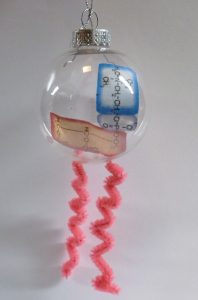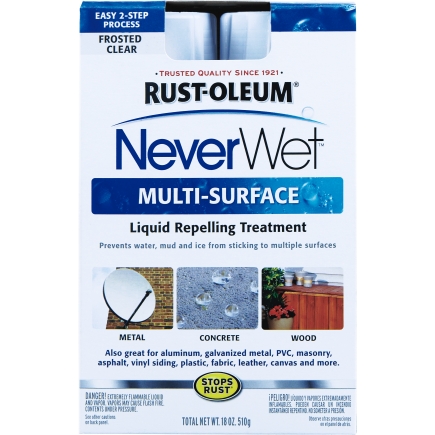4: Lipids (part 2: Phospholipids)
Every cell membrane is made up of phospholipids, making them one of the most important biological molecules. In this lesson you’ll also find out why omega-3 fatty acids (like DHA and EPA) are so important for your body!
1) DRAWING LESSON
34 minutes
Finished drawing sample for lesson 4
2) ACTIVITIES
Activity 4-1 Phospholipid craft idea
Here’s another craft idea. The only tricky thing about this craft is that you need a clear plastic ornament. These are easily found in any craft store around the holidays, but many craft stores do stock them year-round, and they can always be purchased online from craft stores or from Amazon. You’ll also need two chenille stems of any color, some paper, a glue stick, and either a small drill bit or a sharp X-acto knife for drilling or scraping two tiny holes.
1) Use a piece of paper (0r preferably card stock) to draw the part that will go inside the ball. You can use the drawing you did in this lesson as a guide or use an image you find online. Make the paper so it fits snuggly inside, as shown in photo. Make an exact copy of this piece of paper, only in reverse, so you can use it for the back side, and can sandwich the chenille stems between the papers.
2) Make your chenille stems go back and forth to simulate the shape of fatty acid molecules. If you happen to have beads that fit onto the stems, you can add beads for carbons. However, plain stems will be okay,too. They don’t have to be the same color. Use bright colors to make the ornament eye-catching.
3) Apply glue to the insides of your two paper pieces, and put the ends of the chenille stems between. Press and hold. You might even want to lay this under a book and leave it there for a while to make sure it sticks when dry.
4) You will need to make two small holes at the bottom of the plastic ball, for the chenille stems to poke through. You can use a drill and a tiny bit, or you could open the ball and use a sharp craft knife blade to cut two V notices that will serve as holes.
5) Open the ball and place the paper part inside, making sure the chenille stems will come out through the holes. Close the ball. Most balls just snap shut and don’t need glue. If it doesn’t want to close, check to see if your holes are too small for the chenille stems.
6) Add a hanger. Colorful ribbon adds a nice finishing touch, but any hanger will do.
Activity 4-2 NeverWet Demo
You can actually do this lab if you want to, or you can just watch it. You can purchase NeverWet at hardware stores or stores like Walmart.
The tails of phospholipids are hydrophobic and do not want to interact with water at all. In this video you’ll see a demonstration of a very hydrophobic material. NeverWet is a hydrophobic spray coating for fabrics and other materials. The spray is applied to the fabric, coating the outside of all of the fabric fibers. Because hydrophobic molecules do not interact with water, they don’t soak up or hold onto water. You can see in the video that when you pour water onto the fabric treated with the spray, the water just rolls right off instead of being absorbed!
3) SUPPLEMENTAL VIDEOS
4) QUIZ
You can re-take the quiz if you need to.
If the online quiz is not working, or you need a printed copy of the quiz for any reason, you can find a PDF file on the main module page that lets you print all the quizzes.



